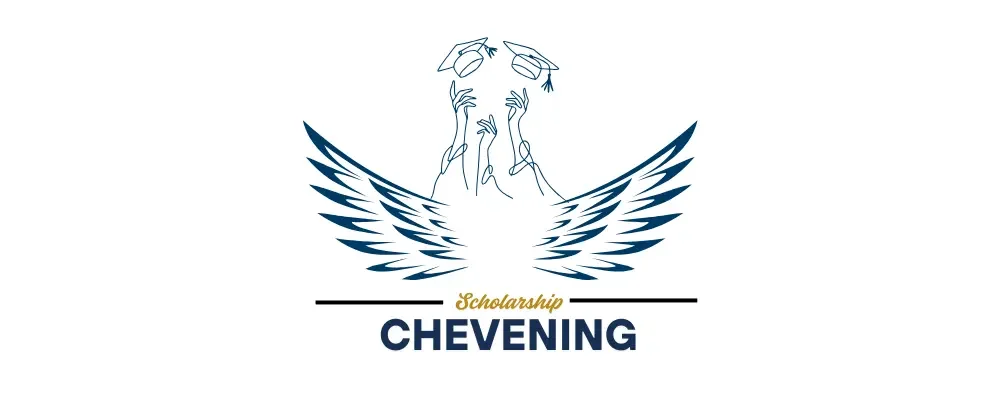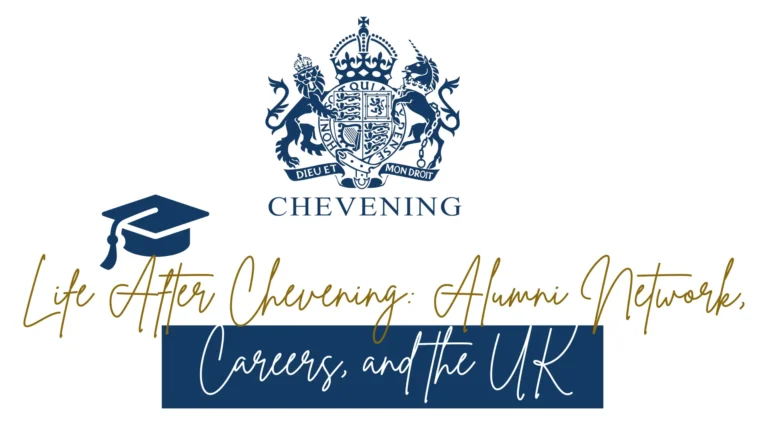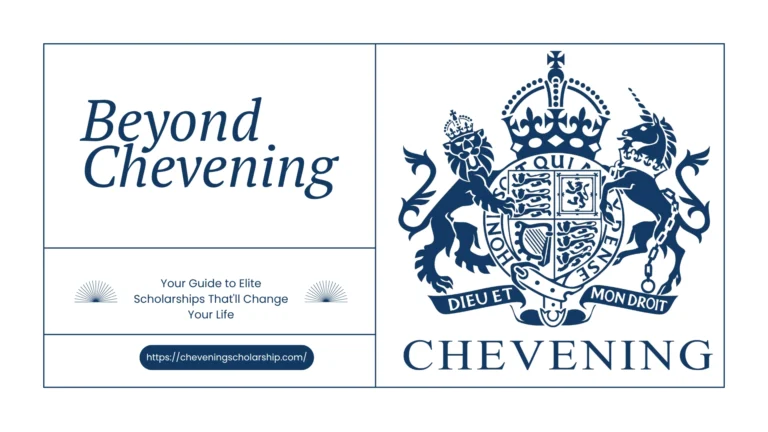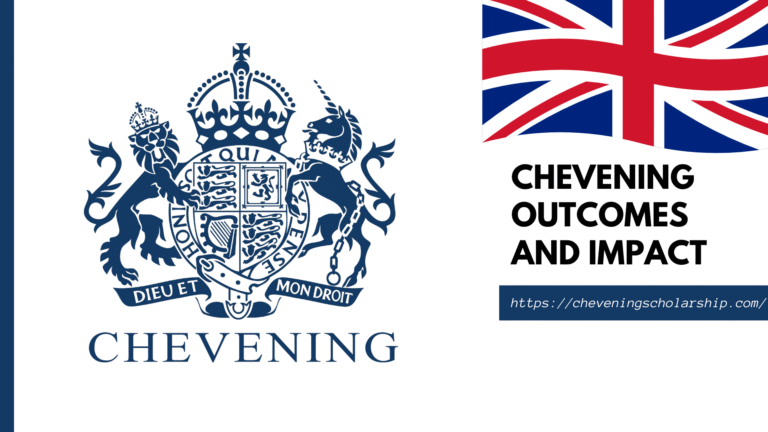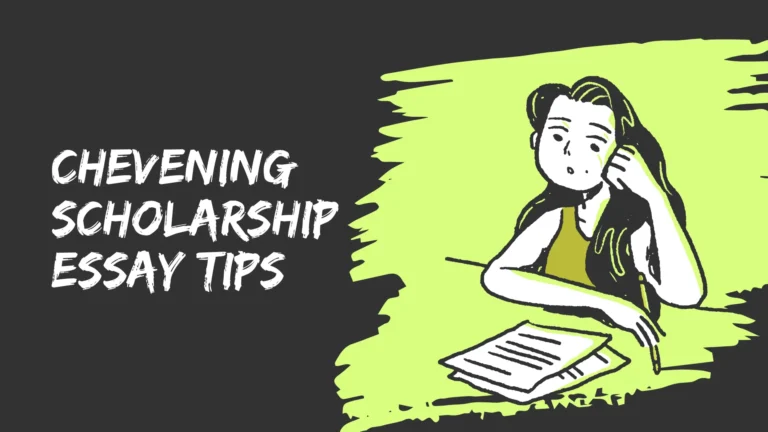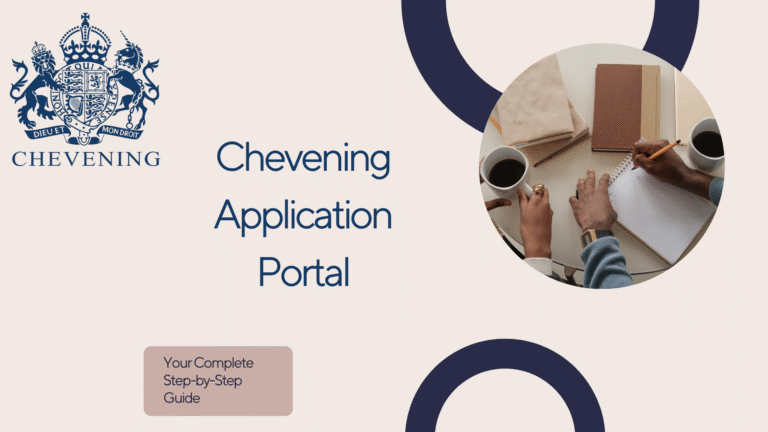Mastering Your Chevening UK University Application: The Complete Strategy Guide
Here’s the thing nobody tells you about the Chevening UK university application process: you can write the most brilliant scholarship essays, ace your interview, and still lose everything if you mess up your university applications.
I’ve watched it happen. Talented candidates with compelling stories who picked three impossibly competitive courses and ended up with zero offers. Or worse—people who got their dream Chevening award only to have it withdrawn because they missed university deadlines they didn’t even know existed.
The university application piece isn’t just a box to tick. It’s the foundation upon which your entire Chevening dream either stands or crumbles. And the frustrating part? The Chevening website tells you what to do but not really how to do it strategically.
So let’s fix that. Consider this your insider’s guide to navigating the Chevening scholarship university application maze without losing your mind or your opportunity.
Understanding the Critical Connection
Before we dive into tactics, you need to understand how Chevening UK university application actually works within the broader scholarship process.
The brutal reality: You’re essentially running two parallel applications simultaneously:
- Your Chevening Scholarship application
- Your UK university applications (three of them)
And here’s the catch: You can win the Chevening but lose the scholarship if you don’t secure at least one unconditional university offer by the specified deadline.
Think of it like getting approved for a mortgage but then failing to actually buy a house. The money was there, ready, waiting—but the opportunity disappears because you didn’t complete the other essential piece.
The Timeline Trap
Most applicants make the mistake of focusing exclusively on their Chevening application first, then dealing with universities later. Big mistake. Huge.
Why this fails:
- UK university applications take time (2-8 weeks for decisions)
- Popular courses fill up quickly
- You need offers BEFORE Chevening makes final decisions
- If you apply late, you might miss out entirely
The smarter approach: Run both processes simultaneously from the start.
The Three-Course Strategy: Choose Wisely
Let’s talk about the Chevening university course selection strategy that actually works. You need three courses at three different UK universities. Not three courses at Oxford. Not three similar programs. Three distinct courses, three separate institutions.
The Strategic Framework
Course 1: The Ambitious Reach This is your dream program at a competitive university. Think Russell Group institutions—the UK’s equivalent of Ivy League schools.
Examples:
- Oxford, Cambridge
- LSE, Imperial College London, UCL
- King’s College London, Edinburgh, Manchester
- Warwick, Bristol, Durham
Why include this: If you get in, fantastic—you’re studying at a world-class institution. If not, you have backups. Dream big here, but be realistic about your credentials.
Course 2: The Solid Match A strong program at a reputable university where you’re very likely to be accepted based on your academic record and experience.
Examples:
- Universities ranked 15-30 in UK
- Programs with good acceptance rates for international students
- Institutions known for welcoming Chevening scholars
Why this matters: This is your realistic target. Good reputation, quality education, achievable entry requirements.
Course 3: The Safety Net A quality program at a university that readily accepts international students and has more flexible entry criteria.
Why you absolutely need this: You must have at least one offer. This ensures you do. There’s no shame in having a backup—it’s just smart planning.
Selection Criteria That Matter
| Factor | Why It Matters | How to Research |
|---|---|---|
| Entry Requirements | Must match your qualifications | Check course pages for grade requirements |
| English Language | IELTS/TOEFL scores vary | Confirm you meet or can meet requirements |
| Application Deadlines | Some courses close early | Note deadlines for all three choices |
| International Student Acceptance | Some programs prefer UK/EU students | Check international student percentages |
| Course Content | Must align with career goals | Read module descriptions thoroughly |
| Location | Affects living costs | London is 20-30% more expensive |
The Chevening University Application Process: Step by Step
Let’s break down the Chevening scholarship application timeline for university applications specifically.
Phase 1: Research and Selection (July-August)
What you’re doing:
- Researching potential courses and universities
- Comparing entry requirements with your credentials
- Understanding application processes for each university
- Identifying which courses align with career goals
Time investment: 20-30 hours
Tools to use:
- Chevening Course Finder (official tool)
- University websites (read actual course handbooks)
- UCAS (for general UK higher education info)
- LinkedIn (to find alumni and see outcomes)
Pro tip: Don’t just read marketing materials. Download actual course handbooks, check module lists, research faculty. You’ll need this detail for your Chevening essays anyway.
Phase 2: Prepare Application Materials (August-September)
What you need:
For every university:
- Academic transcripts (official translations if not in English)
- Degree certificates
- English language test scores (IELTS, TOEFL, or equivalent)
- CV/Resume
- Personal statement (tailored to each course)
- Two academic or professional references
- Passport copy
Important: Each university has slightly different requirements. Make a spreadsheet tracking what each needs.
The personal statement challenge: You need a unique personal statement for each of your three courses. Yes, really. No copy-pasting.
What makes a strong personal statement for UK applications:
- Why this specific course (not just “I want to study in UK”)
- How it connects to your background
- What specific modules excite you
- How it fits your career plans
- Why this university specifically
- What you’ll contribute to the program
Length: Usually 500-1000 words depending on university
Phase 3: Submit Applications (September-October)
Critical timing note: Don’t wait until after you submit your Chevening application to apply to universities. Apply as early as possible.
Why early submission matters:
- Some programs are first-come, first-served
- Earlier applications often get faster decisions
- Gives you time to apply elsewhere if rejected
- Reduces stress during Chevening waiting period
The application process:
Most UK universities use online portals:
- Create account on university’s application system
- Complete online form with personal details
- Upload all required documents
- Pay application fee (typically £50-100 per application)
- Submit and save confirmation
After submission:
- Save all confirmation emails
- Note your application reference numbers
- Track application status in university portals
- Respond promptly to any requests for additional information
Phase 4: Waiting for Offers (October-February)
Timeline expectations:
- Fast universities: 2-4 weeks
- Average: 4-8 weeks
- Slow universities: 8-12 weeks
- Some take even longer
Types of offers you might receive:
1. Unconditional Offer “You’re in! No conditions attached.”
This is what you ultimately need for Chevening. It means you’ve met all requirements and have a guaranteed place.
2. Conditional Offer “You’re in IF you meet certain conditions.”
Common conditions:
- Achieve certain grades (if completing current degree)
- Provide English language test scores
- Submit final transcripts
- Provide additional documentation
Understanding the Chevening conditional offer UK university requirement: You can use conditional offers initially, but must convert at least one to unconditional by Chevening’s deadline.
3. Rejection “Sorry, not this time.”
Don’t panic if one university rejects you. That’s why you have three applications. If all three reject you, you’ll need to quickly apply to other programs.
Navigating the Chevening Unconditional Offer Deadline
This is where many strong candidates stumble. Let’s demystify the Chevening unconditional offer deadline situation.
The requirement: You must have at least one unconditional offer from a UK university by the deadline specified in your Chevening award letter (typically July-August).
What this means:
- You’ve been fully accepted to the program
- No pending conditions remain
- You have a confirmed place
- The university has issued formal documentation
Common deadline scenarios:
Scenario 1: You have unconditional offers early Perfect. You’re in great shape. Choose which course you prefer and inform Chevening.
Scenario 2: You have conditional offers Work on meeting conditions ASAP:
- Submit English test scores
- Provide final transcripts
- Complete any outstanding requirements
Scenario 3: It’s June and you still have no offers Emergency mode. Consider:
- Applying to additional universities with faster turnaround
- Contacting universities to expedite decisions
- Looking at late-application-accepting programs
Pro tip: Apply to at least one university known for quick decision-making as your safety net.
Converting Conditional to Unconditional
Common conditions and how to meet them:
English Language Requirements:
- Take IELTS or TOEFL immediately
- Some universities accept alternatives (Duolingo, PTE)
- Book tests early—dates fill up
- Aim for scores above minimum requirements
Academic Transcripts:
- Request official transcripts early
- Get translations certified if needed
- Some universities accept provisional transcripts initially
Grade Requirements:
- If you’re completing a degree, maintain required grades
- Keep university updated on progress
- Request letters from current institution if needed
The Chevening University Application Tips That Actually Matter
Let’s talk practical Chevening UK university application tips based on what actually works.
Tip 1: Diversify Your Applications Strategically
Geographic diversity: Consider applying to universities in different cities:
- One in London (if you can manage higher costs)
- One in a major city (Manchester, Edinburgh, Birmingham)
- One in a smaller university town (Durham, Bath, St Andrews)
Why this helps:
- Different cities have different acceptance patterns
- Demonstrates flexibility
- One might make decisions faster than others
Tip 2: Understand UK Application Conventions
UK universities care about:
- Academic merit and potential
- Clear motivation for the specific course
- Relevant preparation and background
- How you’ll contribute to their program
- Your post-study plans
They care less about:
- Extracurriculars (unlike US universities)
- Personal hardship stories (unless relevant to academic journey)
- Generic praise of the institution
- Length over substance in personal statements
Tip 3: Tailor Everything to Each Course
The wrong approach: “I want to study at your university because it has a great reputation and I’m passionate about [field].”
The right approach: “I’m drawn to your MSc in Environmental Policy specifically because Dr. Smith’s research on urban sustainability directly relates to the challenges I’m addressing in Lagos, where I’ve been working on green infrastructure for three years. The module on Policy Implementation particularly interests me because…”
See the difference? Specific, relevant, shows genuine research.
Tip 4: Get Your References Right
Ideal referees for UK applications:
- Recent supervisors or managers who know your work well
- Professors if you graduated recently (within 2-3 years)
- Senior colleagues who can speak to your academic potential
What makes a strong reference:
- Specific examples of your work
- Assessment of your suitability for postgraduate study
- Comment on your intellectual curiosity and capabilities
- Comparison to other students/colleagues they’ve known
Logistics:
- Give referees 4-6 weeks notice
- Provide them with your CV and personal statement
- Brief them on each course and why you’re applying
- Follow up politely if they’re approaching deadline
Tip 5: Track Everything Obsessively
Create a spreadsheet with:
- University names and course titles
- Application deadlines
- Documents submitted
- Application reference numbers
- Decision timelines
- Offer status (conditional/unconditional)
- Conditions remaining
- Deadlines for meeting conditions
Why this matters: You’re juggling three university applications plus Chevening. Details will slip through cracks without organization.
Common Chevening University Application Mistakes
Let’s address the Chevening university application rejection reasons and mistakes that sink otherwise strong candidates.
Mistake 1: All Three Courses Too Competitive
The problem: Applying to Oxford, Cambridge, and Imperial with mediocre grades because “aim high.”
The reality: These institutions reject 80-90% of applicants. If all three of your choices are this competitive, you’re gambling with your entire Chevening opportunity.
The fix: Balance ambition with realism. One reach, one match, one safety.
Mistake 2: Not Actually Reading Course Requirements
The problem: Applying to a quantitative economics program when you have no mathematics background, or a design program without a portfolio.
The reality: Universities have prerequisites for good reasons. If you don’t meet them, you’ll be rejected.
The fix: Read requirements carefully. If you’re borderline, email the admissions office to ask if your background is sufficient.
Mistake 3: Generic Personal Statements
The problem: Using the same personal statement for all three courses with just the university name changed.
The reality: Admissions officers read thousands of applications. Generic statements are obvious and unconvincing.
The fix: Write unique statements for each course showing genuine research and specific interest.
Mistake 4: Missing University Deadlines
The problem: Focusing only on Chevening deadlines and forgetting universities have their own timelines.
The reality: Many popular courses close in January or February. Apply after that and you’re automatically rejected.
The fix: Mark university deadlines in your calendar and aim to submit at least a month early.
Mistake 5: Not Following Up on Application Status
The problem: Submitting applications then waiting passively for months without checking status.
The reality: Sometimes documents go missing, emails end up in spam, or additional information is needed.
The fix: Check application portals weekly. Respond immediately to any communication.
Mistake 6: Ignoring English Language Requirements
The problem: Assuming “I speak English well enough” without taking required tests.
The reality: Most UK universities require IELTS or TOEFL scores even if you speak English fluently. No test = no admission.
The fix: Take English tests early, aim above minimum scores, and submit results promptly.
Understanding the Chevening UK University Offers
Once offers start arriving, you need to understand what you’re looking at and what actions to take.
Decoding Your Offer Letter
What it includes:
- Course title and start date
- Offer status (conditional/unconditional)
- Any conditions attached
- Deadline for meeting conditions
- Deadline for accepting offer
- Fee information
- Next steps
What to check immediately:
- Course details match what you applied for
- Start date aligns with Chevening timeline (September/October)
- Conditions are achievable
- Deadline for conditions is before Chevening deadline
The Acceptance Process
For Chevening purposes: You don’t formally accept university offers until Chevening confirms your award. But you do need to:
- Acknowledge receipt
- Confirm you’re still interested
- Work on meeting any conditions
- Stay in communication with the university
Timeline:
- Receive offer (December-March)
- Work on meeting conditions (January-June)
- Chevening makes final decision (June-July)
- Meet final conditions and get unconditional offer (by July-August)
- Formally accept university place (August)
- Begin visa process (August)
The Chevening UK Masters Application Success Formula
Let’s distill everything into a practical Chevening UK masters application success formula.
The 90-Day Action Plan
Days 1-30: Research and Preparation □ Research 10-15 potential courses □ Narrow down to final three □ Check entry requirements thoroughly □ Request academic transcripts □ Identify referees and give them notice □ Register for English language tests if needed □ Draft personal statements
Days 31-60: Application Completion □ Finalize personal statements (unique for each) □ Gather all required documents □ Create tracking spreadsheet □ Submit first application (your safety net) □ Submit second application □ Submit third application □ Confirm referees have submitted □ Save all confirmations
Days 61-90: Follow-Up and Optimization □ Check application status weekly □ Respond to any university queries immediately □ Take English tests if needed □ Research backup universities in case needed □ Begin preparing for possible interviews □ Stay organized with deadlines
Handling Special Situations
What If You Get Rejected from All Three?
Don’t panic. You have options:
Option 1: Quick Additional Applications Identify universities with:
- Later application deadlines
- Faster decision timelines
- More flexible entry requirements
- Good track record with Chevening scholars
Option 2: Contact Chevening Explain the situation and ask for guidance. They may:
- Grant extension for securing offers
- Suggest alternative courses
- Provide additional support
Option 3: Strengthen and Reapply If it’s too late for current cycle, use the time to:
- Gain more experience
- Improve English scores
- Strengthen academic credentials
- Reapply next year
What If You Can’t Meet Conditional Offer Requirements?
Contact the university immediately. Explain your situation. They might:
- Offer alternative pathways
- Accept slightly lower requirements
- Suggest pre-sessional courses
- Grant extensions on deadlines
Never assume you can’t negotiate. Universities want good students and are often flexible within reason.
What If Offers Come After Chevening Interviews?
This is actually common and okay. The Chevening timeline accommodates this. You just need:
- At least conditional offers by interview time (shows you’re serious)
- Unconditional offer by the final deadline (July-August)
Stay in communication with both Chevening and universities about timing.
Making Your Final Decision
If you’re fortunate enough to receive multiple offers, you’ll need to choose which course to pursue.
Factors to consider:
Academic fit:
- Which curriculum best matches your career goals?
- Which faculty offer the most relevant expertise?
- Which research opportunities excite you most?
Career outcomes:
- What do alumni from each program do afterward?
- Which has stronger industry connections in your field?
- Which offers better career support services?
Practical considerations:
- Location and living costs
- Course structure (taught vs. research-heavy)
- Assessment methods (exams vs. coursework)
- Length (12 months vs. 15-18 months)
Network and community:
- Size and diversity of cohort
- Active alumni network
- Chevening scholar community at that university
Personal factors:
- City environment (large urban vs. smaller town)
- Weather and climate
- Distance from major airports (for family visits)
- Cultural offerings and lifestyle
Your Action Plan Starts Now
The Chevening scholarship university requirements and application process is complex, but it’s entirely manageable with the right approach.
Your immediate next steps:
This week:
- Create a research spreadsheet for potential courses
- Check Chevening website for current timeline
- Request academic transcripts from your university
- Register for IELTS/TOEFL if needed
This month:
- Finalize your three course choices
- Contact potential referees
- Begin drafting personal statements
- Gather all required documents
- Create application tracking system
Before deadlines:
- Submit all three university applications early
- Follow up on application status regularly
- Respond promptly to any requests
- Keep Chevening informed of progress
Final Thoughts: The University Application as Investment
Your Chevening UK university application isn’t just paperwork—it’s an investment in your future. Every hour you spend researching courses, crafting personal statements, and securing strong references is an hour spent building toward your goals.
Yes, it’s time-consuming. Yes, it’s occasionally frustrating. Yes, you’ll question whether you’re doing it right.
But here’s what I know: the scholars who succeed aren’t necessarily the ones with the most impressive credentials. They’re the ones who approach the process strategically, stay organized, and don’t give up when obstacles appear.
Your Chevening dreams deserve better than a last-minute, thrown-together university application. They deserve the strategic, thoughtful approach that maximizes your chances of success.
So start early. Choose wisely. Apply strategically. Follow up consistently.
And in September, when you’re settling into your UK university accommodation, unpacking your bags and preparing for your first day of lectures, you’ll be grateful you took this process seriously.
Your future self is counting on your present self to get this right. Don’t let them down.
Ready to start your university applications? Download our free university application checklist and timeline tracker. Make your Chevening dream a reality with smart planning and strategic execution.
